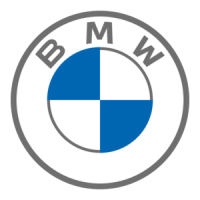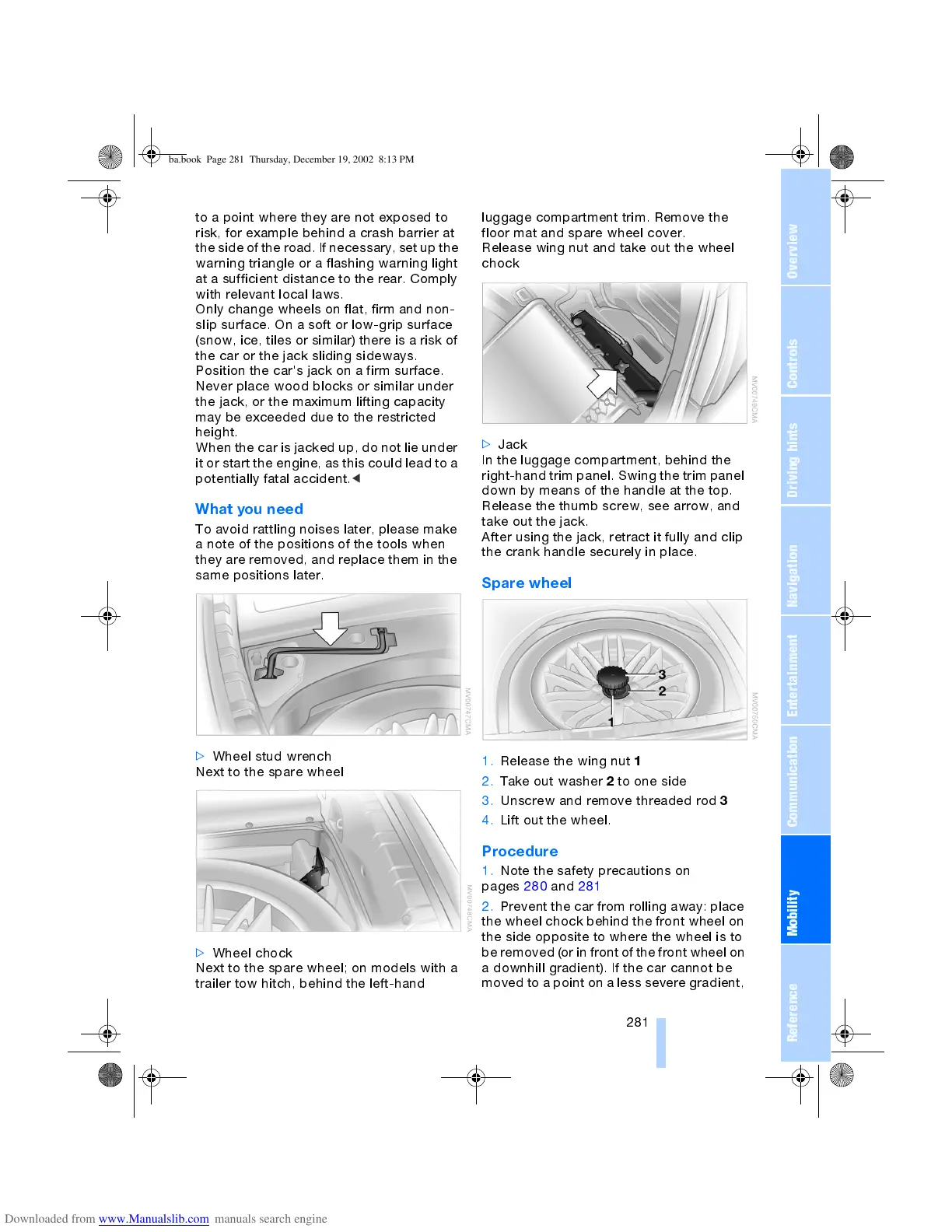OverviewControlsDriving hintsCommunication NavigationEntertainmentMobilityReference
281
to a point where they are not exposed to
risk, for example behind a crash barrier at
the side of the road. If necessary, set up the
warning triangle or a flashing w arning light
at a sufficient distance to the rear. Comply
with relevant local laws.
Only change wheels on flat, firm and non-
slip surface. On a soft or low-grip surface
(snow, ice, tiles or similar) there is a risk of
the car or the jack sliding sideways.
Position the car's jack on a firm surface.
Never place wood blocks or similar under
the jack, or the maximum lifting capacity
may be exceeded due to the restricted
height.
When the car is jacked up, do not lie under
it or start the engine, as this could lead to a
potentially fatal accident.
<
What you need
To avoid rattling noises later, please make
a note of the positions of the tools when
they are removed, and replace them in the
same positions later.
>
Wheel stud wrench
Next to the spare wheel
>
Wheel chock
Next to the spare wheel; on models with a
trailer tow hitch, behind the left-hand
luggage compartment trim. Remove the
floor mat and spare wheel cover.
Release wing nut and take out the wheel
chock
>
Jack
In the luggage compartment, behind the
right-hand trim panel. Swing the trim panel
down by means of the handle at the top.
Release the thumb screw, see arrow, and
take out the jack.
After using the jack, retract it fully and clip
the crank handle securely in place.
Spare wheel
1. Release the wing nut
1
2. Take out washer
2
to one side
3. Unscrew and remove threaded rod
3
4. Lift out the wheel.
Procedure
1. Note the safety precautions on
pages 280 and 281
2. Prevent the car from rolling away: place
the wheel chock behind the front wheel on
the side opposite to where the wheel is to
be removed (or in front of the front wheel on
a downhill gradient). If the car cannot be
moved to a point on a less severe gradient,
ba.book Page 281 Thursday, December 19, 2002 8:13 PM

